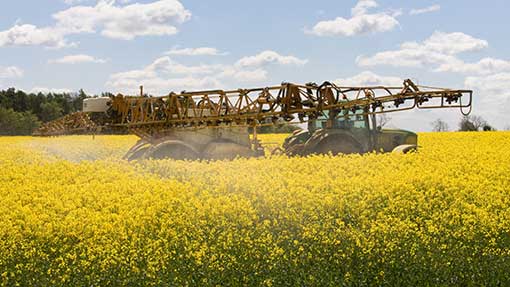Second spray may be needed for sclerotinia in OSR

A second fungicide spray may be needed on oilseed rape crops that see a prolonged flowering period to protect them from the disease sclerotinia.
With most crops flowering early this season, there is likely to be an extended period of flowering, while recent rainfall may also have increased the risk of infection.
The rainfall will have encouraged petals to stick to leaves and petal stick increases the risk of infection as many petals are carrying sclerotinia spores.
See also: Ultra early OSR heightens sclerotinia risk
“If crops are still in open flower three weeks after the first spray for sclerotinia then growers should consider a second application,” Caroline Young, research scientist at ADAS, tells Farmers Weekly.
Germination of sclerotinia has risen in all ADAS monitor crops, and with night-time temperatures above 7C in the past week, Dr Young believes infection is likely to have occurred on unprotected crops at many sites.
Although night temperatures have fallen recently, there is still a risk of the disease developing through the flowering period.
She adds that fungicide product choice for sclerotinia will be influenced by the need to protect against light leaf spot disease as well as the need for plant growth regulators on large crop canopies.
Dr Young advises growers to use full, robust rates of fungicides to protect against the disease hitting yields.

